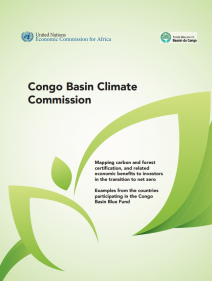The world’s three largest tropical rainforests are located in the Amazon, the Congo River Basin and South-East Asia. Over the past 20 years, forests across South-East Asia have collectively become a net source of carbon emissions due to clearing for plantations, uncontrolled fires and drainage of peat soils. The Amazon River Basin, which stretches across nine countries in South America, is still a net carbon sink, but teeters on the edge of becoming a net source if forest loss continues at current rates. The Amazon Basin has experienced heightened deforestation over the past four years due to clearance for cattle pasture and degradation from fires. Of the world’s three largest tropical rainforests, only the Congo Basin has enough standing forest left to remain a strong net carbon sink. The Congo’s tropical rainforest sequesters 600 million metric tons more carbon dioxide per year than it emits, which is equivalent to about one third of the carbon dioxide emissions from all transportation in the United States of America. Protecting the remaining forests in the Congo River region is critical to mitigating climate change.
Share this:
Examples from the countries participating in the Congo Basin Blue Fund
Release Date:
8 March, 2024
© United Nations Economic Commission for Africa

